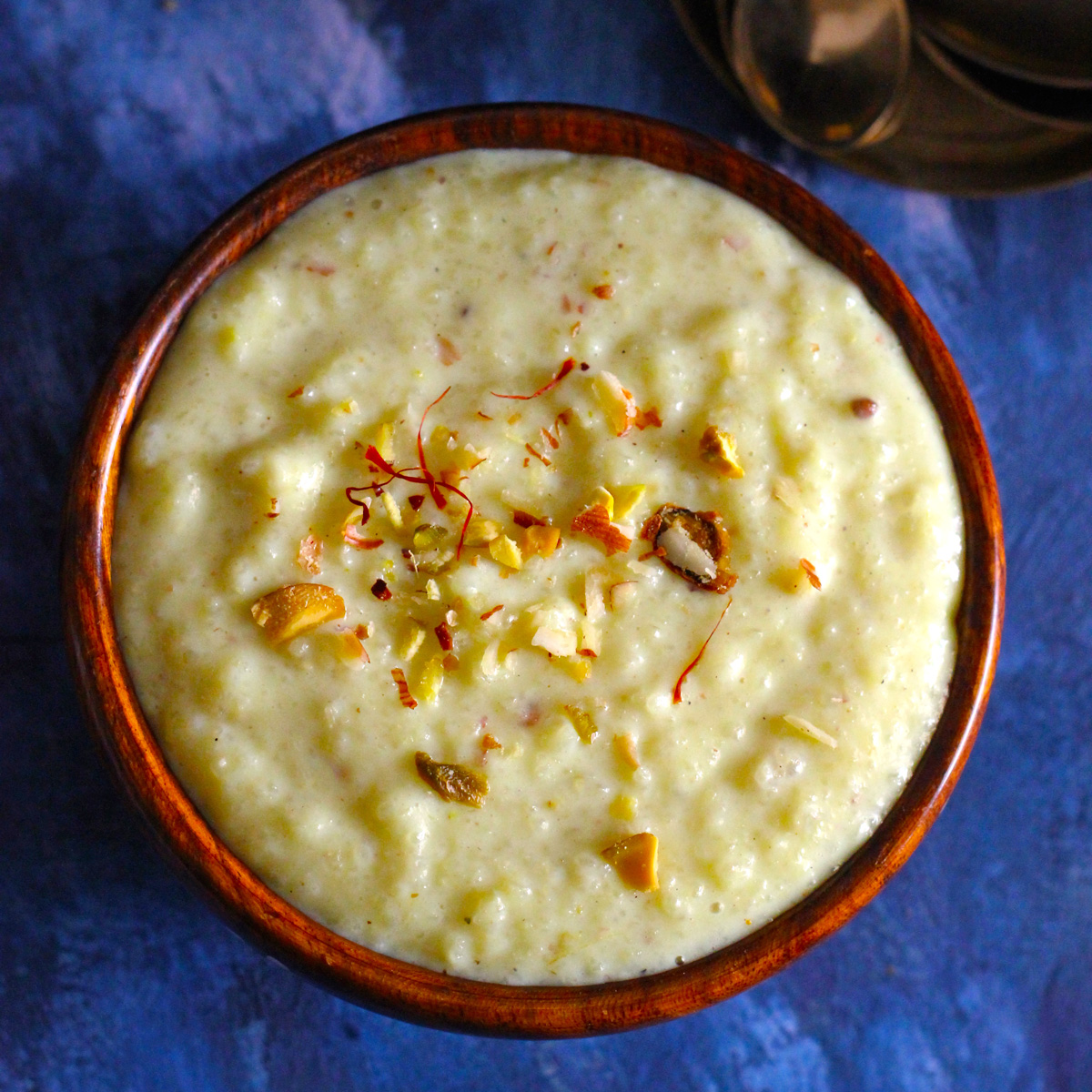Today, we are seasoning the traditional rice pudding recipe with a Middle East flavor. Phirni is a creamy rice and orange blossom water dessert that can become addictive for those who try it for the first time.
Phirni has many versions, and all are delicious and aromatic in different ways. This is because this dessert is not only typical in India, but also in Pakistan, Turkey, and other Middle East countries. In fact, its origins are controversial: although the most widespread version is that this typical dessert was introduced to India first, many Pakistanis claim it to be theirs.
An experience that indulges all the senses
Full of smells, colors, shapes, and flavors, India is a country with a great gastronomic culture and many cultural norms around it. What may shock you the most at first is the tradition of eating with your hands, but this is also a part of the sensory experience. Moreover, in big celebrations, guests eat directly from the hand of their host as a sign of respect —and, in any situation, rejecting food when being offered would be considered bad manners. Food, too, is part of the dowry or gifts offered to the bride and groom on the wedding day.
Broadly speaking, it can be said that the big difference between the food in the North and in the South of the country is the very high level of spiciness northern people are fond of. Anyway, you will surely enjoy an explosion of multiple exotic flavors —you won’t be able to stop eating!
Discover India’s rice-based cuisine
If we are talking about Indian cuisine, we necessarily have to talk about rice. India is one of the original producers of rice, having the largest crop in the world. Therefore, it is the staple food for 65% of India’s total population and its production became the main source of employment for more than 50 million families.
For all this, Indian cuisine is largely based upon rice dishes, from main courses to desserts, and, fortunately, lots of them are very easy to make, for example, rice pudding with condensed milk. Although 600 improved rice varieties were recently introduced in the country, Basmati rice is still the prevailing option. Below, you can find an example of a simple and delicious Phirni recipe using Basmati rice. You will notice that, unlike other rice and milk desserts, for Phirni the rice grain is ground to a semolina-like texture.
Phirni
Ingredients (6 servings)
- 1.7 oz (50 g) basmati rice.
- 2 tbsp water.
- 1 qt of milk.
- 150 g white sugar.
- 1 tsp cardamom powder.
- 1 1/2 tbsp orange blossom water.
- 1 tsp saffron threads.
- For the dressing: almond slices and chopped pistachios.
Preparation
- Rinse the rice and soak it in fresh water for at least 2 hours.
- Drain and dry the rice with a cotton cloth. Keep it covered with the cloth for 30 minutes.
- Grind the rice with two spoonfuls of water in a food processor. During the grinding process, it will be necessary to open the lid three or four times to lower the remains of the rice from the walls of the glass. Remove to a saucer.
- In a large saucepan, heat the milk but set aside a spoonful, to which you will add the saffron threads; set aside. When it starts to boil, add the orange blossom water, along with the cardamom and the sugar.
- Once it starts to bubble again, lower the heat and cook at medium heat for 40 minutes, stirring frequently to prevent the rice from sticking to the bottom of the saucepan. You will also see the milk gradually thickening.
- Once the rice is cooked, add the saffron, stir and divide into individual bowls. Let cool before refrigerating.
- Garnish with the sliced almonds and chopped pistachios before serving.
Helpful tips
- If you do not have cardamom powder, and you have to crush it, open the pods as if they were sunflower seeds, extract the seeds and crush them in a mortar with a pinch of sugar to prevent them from jumping out of the mortar.
- Traditionally this dessert is served in small clay bowls, probably because it is a material that helps preserve it at the ideal temperature, in this case, cold.
Author Profile

Latest entries
 Online BettingApril 17, 2024A Comprehensive Guide to High-Payout Casino Games on 1xBet
Online BettingApril 17, 2024A Comprehensive Guide to High-Payout Casino Games on 1xBet NBAApril 16, 20242024 WNBA Draft: With the First Pick………
NBAApril 16, 20242024 WNBA Draft: With the First Pick……… NBAApril 14, 2024NY Knicks: A New Crew, a New Grit, a New Hope
NBAApril 14, 2024NY Knicks: A New Crew, a New Grit, a New Hope NBAApril 3, 2024NBA Champions 2024: Who are the favorites?
NBAApril 3, 2024NBA Champions 2024: Who are the favorites?

